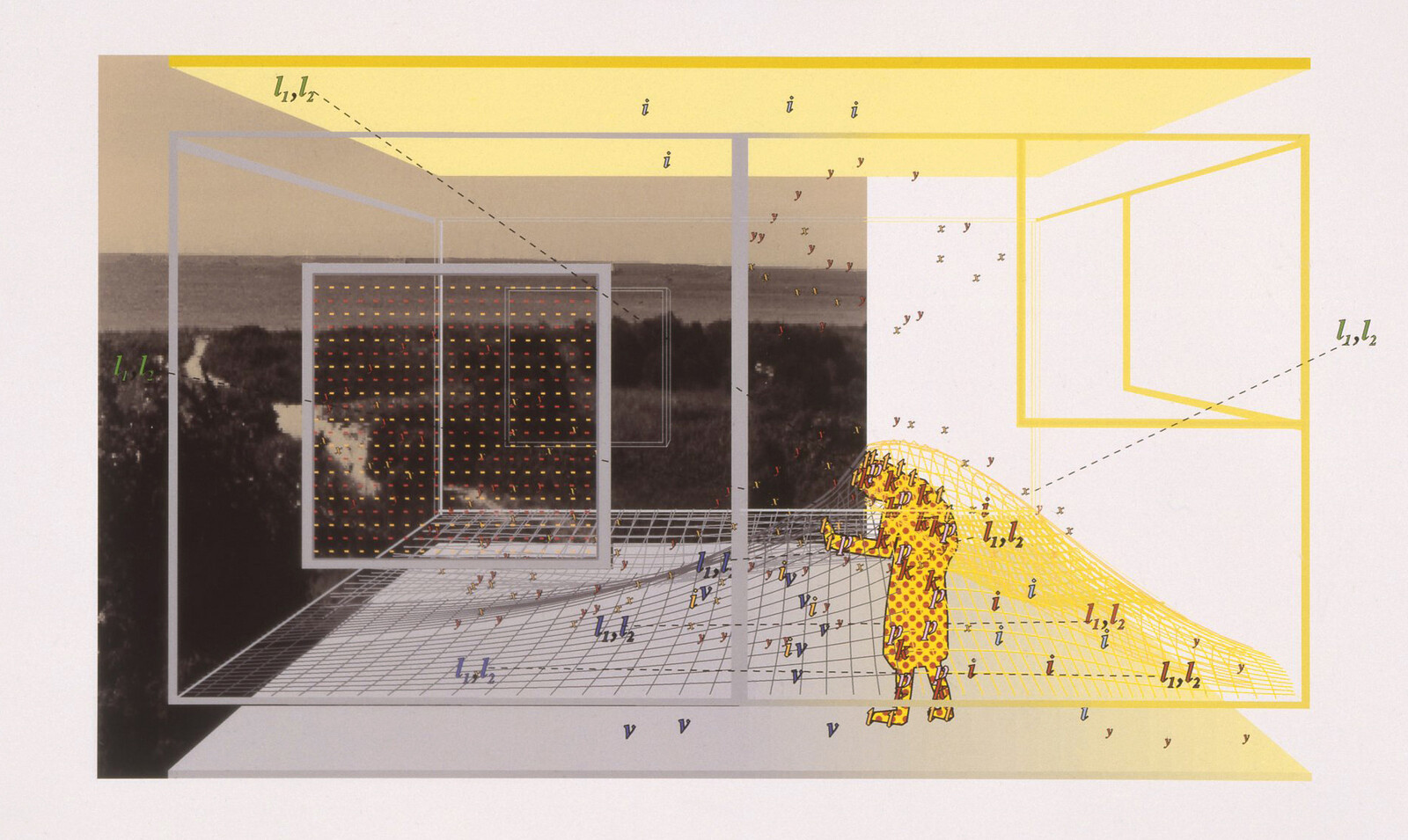Eternal Gradient
March 30–June 16, 2018
Buell Hall, Columbia University GSAPP
1172 Amsterdam Avenue
New York, NY 10027
USA
Encounters with Arakawa and Madeline Gins Conference:
Friday, March 30, 1–6pm
Exhibition opening reception:
Friday, March 30, 6:30–8:30pm
The exhibition Arakawa and Madeline Gins: Eternal Gradient at the Arthur Ross Architecture Gallery traces the emergence of architecture as a wellspring of creativity and theoretical exploration for the artist Arakawa (1936-2010) and poet and philosopher Madeline Gins (1941-2014). Presenting original drawings—many on view for the first time—as well as archival material and writings, it uncovers a little-known body of visionary architectural work from the 1980s.
The opening of the exhibition coincides with a half-day conference entitled Encounters with Arakawa and Madeline Gins. This event convenes architects, artists, historians, and writers to offer fresh interpretations of Arakawa and Gins’ work and theories in the context of contemporary practices and scholarship.
Participants include:
Adrienne Hart (Neon Dance), Momoyo Homma (Co-ordinologist Inc.), Lucy Ives (author), Andrés Jaque (Office for Political Innovation), Ed Keller (Parsons School for Design), Thomas Kelley and Carrie Norman (Norman Kelley), Léopold Lambert (The Funambulist), Spyros Papapetros (Princeton University), Julian Rose (formlessfinder), Jenna Sutela (visual artist), Miwako Tezuka (Reversible Destiny Foundation), Troy Conrad Therrien (Guggenheim Museum)
Arakawa and Madeline Gins: Eternal Gradient features over 40 hand drawings, an architectural model, and archival material including ephemera, research materials, poetry, manuscripts, photographs, slides, and other items drawn from the Estate of Madeline Gins.
In the early 1960s, Arakawa and Madeline Gins began a remarkably original and prolific collaboration that spanned nearly five decades and encompassed painting, installations, poetry, literature, architecture, urbanism, philosophy, and scientific research. Complementing their independent artistic and literary practices, Arakawa and Gins’ creative partnership launched with visual, semiotic, and tactile experiments that questioned the limits and possibilities of human perception and consciousness. During the 1980s—a critical juncture in their careers—this line of inquiry became increasingly spatial as Arakawa and Gins together developed a series of speculative architectural projects that sought to challenge the bodily and psychological experience of users. Through these investigations, the artists began to articulate their concept of reversible destiny, arguing for the transformative capacity of architecture to empower humans to resist their own deaths.
The exhibition examines this pivotal exploratory period through a stunning array of original drawings—many exhibited for the first time—as well as archival material and writings that illuminate the working methods and wide-ranging research interests of Arakawa and Gins. It uncovers a little-known body of visionary work that anticipated the artists’ subsequent commitment to architecture and their realization of various “sites of reversible destiny,” including Ubiquitous Site-Nagi’s Ryoanji (1994, Okayama, Japan); Yoro Park (1995, Gifu, Japan); Reversible Destiny Lofts Mitaka (2005, Tokyo, Japan); and Bioscleave House (2008, East Hampton, New York).
The exhibition Arakawa and Madeline Gins: Eternal Gradient is curated by Irene Sunwoo, GSAPP Director of Exhibitions, and Tiffany Lambert, GSAPP Assistant Director of Exhibitions. It is designed by Norman Kelley (Carrie Norman and Thomas Kelley) with graphic design by Eline Mul. The exhibition is made possible in part by the Estate of Madeline Gins, and is organized in partnership with the Reversible Destiny Foundation.


